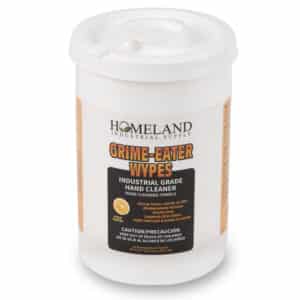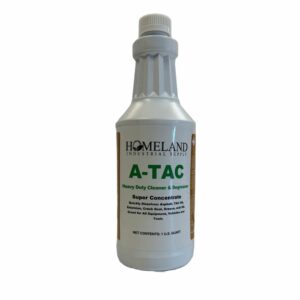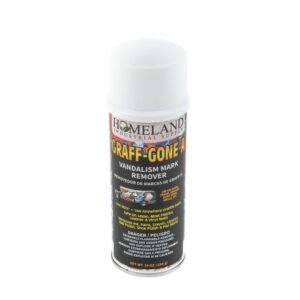Want To Safely Remove Battery Corrosion and Prevent Future Issues? This ultimate guide will help you:
Picture this: you’re about to use your favorite electronic device or power up an essential piece of equipment, but when you open the battery compartment, you’re greeted by a nasty surprise – crusty, white, or greenish buildup around the battery terminals.
Yuck! This unwelcome sight is battery corrosion, and it can lead to poor performance, short battery life, and even permanent damage in both devices and equipment. But don’t panic! In this ultimate guide, we’ll walk you through the steps to safely remove battery corrosion and share expert tips on preventing future issues.
Whether you’re dealing with a small remote control or a large industrial appliance, by the end of this article, you’ll be equipped with the knowledge and confidence to tackle battery corrosion head-on and keep your devices and equipment in tip-top shape.
Removing Battery Corrosion: A Step-by-Step Guide
Gather Your Tools and Supplies To Remove Battery Corrosion
- Safety goggles and rubber gloves for protection
- Soft-bristled brush (e.g., toothbrush)
- Clean, lint-free cloth
- White vinegar or lemon juice
- Baking soda
- Cotton swabs
- Rubbing alcohol
- Petroleum jelly or battery terminal protector spray
Prepare Your Work Area
- Choose a well-ventilated area to work in, preferably outdoors or near an open window.
- Lay down a sheet of newspaper or an old towel to protect your work surface.
- Put on your safety goggles and rubber gloves to avoid contact with corrosive materials.
Remove the Corroded Batteries
- Carefully remove the batteries from your device or equipment.
- Inspect the battery compartment for any signs of leakage or damage.
- If the batteries are leaking, dispose of them properly according to your local regulations.
Clean the Battery Terminals and Compartment
Using White Vinegar or Lemon Juice
- Dip a cotton swab in white vinegar or lemon juice and gently apply it to the corroded areas.
- Let the solution sit for a few minutes to help dissolve the corrosion.
- Use a soft-bristled brush to scrub away the loosened corrosion gently.
- Wipe the area clean with a damp, lint-free cloth.
Using Baking Soda
- Mix a small amount of baking soda with water to create a paste.
- Apply the paste to the corroded areas using a cotton swab.
- Let the paste sit for a few minutes to neutralize the corrosion.
- Use a soft-bristled brush to scrub away the loosened corrosion gently.
- Wipe the area clean with a damp, lint-free cloth.
Dry and Protect the Battery Terminals
- Use a clean, lint-free cloth to dry the battery terminals and compartment thoroughly.
- Apply a thin layer of petroleum jelly or battery terminal protector spray to the terminals to help prevent future corrosion.
Reinstall the Batteries
- Insert new batteries into your device or equipment, making sure they are installed correctly.
- Close the battery compartment securely.
- Test your device or equipment to ensure it is working properly.
Using SAFE-CLEAN to Effectively Remove Battery Corrosion
When it comes to safely removing battery corrosion and preventing future issues, it’s essential to use the right cleaning products. One excellent choice for this task is SAFE-CLEAN Energized Electrical Equipment Cleaner from Homeland Industrial Supply. SAFE-CLEAN is a non-flammable and non-conductive cleaner that is USDA authorized, making it safe for use on various metal parts, electric motors, and electronic subassemblies. This product is particularly useful when dealing with battery corrosion because it quickly and effectively cleans oil, grease, and dirt from energized electrical equipment without leaving any residue behind. One of the key advantages of using SAFE-CLEAN is that it can be used while the equipment is operating, minimizing downtime and allowing for efficient maintenance. With a dielectric strength of 29,000 volts and being free from 1,1,1 Trichloroethane, this cleaner is a safe and reliable option for removing battery corrosion. When using SAFE-CLEAN to remove battery corrosion, it’s essential to test the product on a small, inconspicuous area of any plastic components before applying it to the entire surface. This precautionary measure ensures that the cleaner is compatible with the specific plastic materials present in your equipment. By choosing SAFE-CLEAN Energized Electrical Equipment Cleaner from Homeland Industrial Supply, you can confidently tackle battery corrosion issues and prevent future problems. This product’s unique properties make it an ideal solution for maintaining the cleanliness and functionality of your electrical equipment, ultimately extending its lifespan and saving you time and money in the long run.Preventing Battery Corrosion: Tips and Tricks
Choose High-Quality Batteries
Invest in high-quality, brand-name batteries from reputable manufacturers. Cheaply made batteries are more prone to leakage and corrosion. Store Batteries Properly- Keep batteries in a cool, dry place away from direct sunlight and extreme temperatures.
- Store batteries in their original packaging or a battery organizer to prevent them from touching each other.
- Remove batteries from devices or equipment that won’t be used for an extended period.
- Periodically check the battery compartments of your devices and equipment for signs of corrosion.
- Clean the battery terminals and compartments as needed to prevent buildup.
- Follow the manufacturer’s guidelines for proper maintenance and storage of your specific devices and equipment.
- Regularly test your batteries using a battery tester to ensure they are still in good condition.
- Replace batteries as soon as they show signs of weakness or reach the end of their recommended lifespan.
Remove Battery Corrosion: Frequently Asked Questions (FAQs)
- Can I use other acidic substances, like cola or orange juice, to remove battery corrosion?
- Is it safe to use steel wool or a wire brush to remove battery corrosion?
- Can I use baking soda and vinegar together to remove battery corrosion?
- How often should I check my devices and equipment for battery corrosion?
- Can battery corrosion damage my device or equipment permanently?
- What should I do if my device or equipment isn’t working after cleaning the battery corrosion?









